
The sun hasn’t yet risen, but all 12 crew on board the Toftevaag are awake and giddy with anticipation. It’s summer 2022, and we’re in the midst of a three-month research season off the Balearic Islands for the Altinak Research Institute. We’re currently sailing within the Cabrera Archipelago National Park, just south of Mallorca, which in 2019 was extended to include almost 90,000ha of open sea. Cabrera Gran, the main island that we departed from, now lies more than 10 nautical miles to the west of our boat, but we are still well within the park’s boundaries.
It isn’t long before we spot a small pod of bottlenose dolphins off our starboard side. They glide and glisten in the dark water just under the bow, almost within reach, staring back at us. Then in perfect synchrony, they veer downwards, quickly fading into the depths.
It’s always a privilege when these curious creatures join our voyage, but bottlenose dolphins are relatively coastal and aren’t our target species. It is a larger and more mysterious cousin of theirs that we seek, a little known denizen of deep waters far from shore. We are in search of Risso’s dolphin, a species that we’ve learned relatively little about since it was first described more than 200 years ago by the French-Italian naturalist whose name it carries: Antoine Risso.
The sun appears, bathing the Toftevaag in a soft golden light. Checking my navigation app, I can see from the contour lines that the water depth is increasing rapidly, from 200m to 800m, and deeper still. We are now crossing over the marine park’s most important feature: the Emile Baudot escarpment, which stretches for 300km all the way to mainland Spain.
This story is from the {{IssueName}} edition of {{MagazineName}}.
Start your 7-day Magzter GOLD free trial to access thousands of curated premium stories, and 9,000+ magazines and newspapers.
Already a subscriber ? Sign In
This story is from the {{IssueName}} edition of {{MagazineName}}.
Start your 7-day Magzter GOLD free trial to access thousands of curated premium stories, and 9,000+ magazines and newspapers.
Already a subscriber? Sign In
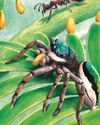
Jump Around - Bagheera Kiplingi - The acrobatic spider with a predilection for veggie food
Spiders eat flies, right? everyone knows that the 45,000 or so spiders in the world are all obligate carnivores, more or less – eating other animals, mainly invertebrates. Nature, however, loves an exception, and one particular spider missed out on that ecological memo. It goes by the wonderful scientific name of Bagheera kiplingi, and its claim to fame is that its diet is – at least mostly – vegetarian.
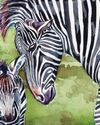
Female of the Species - Zebras - A strong sisterhood is key to staying safe
Zebras are masters of confusion. Their collective noun is ‘a dazzle’, which is fitting since their bodies and behaviour have been surprising scientists for centuries.
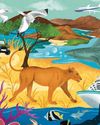
See It, Save It? - Wildlife tourism can be a powerful ally in protecting nature - but it can also harm it. We weigh up the pros and cons.
The sums of wildlife travel aren’t as simple as more tourists equals happier nature. How much did my visit really contribute to the conservation of Lady Liuwa and her habitat – and was that outweighed by carbon emissions from my flights? Did my presence disturb the animals’ natural behaviour more than it reduced the threat of poaching or benefited local communities?The question of whether wildlife travel is, on balance, good for wildlife is a complex one – and there’s no simple answer.

Can Your Really Offset Emissions? - Planning an overseas wildlife-watching trip entails facing some inconvenient truths
Imagine (or maybe you don't need to) that you hanker after the safari trip of a lifetime in sub-Saharan Africa. A 17-day tour beginning at the iconic Victoria Falls, passing through Zimbabwe, Zambia, Malawi and Tanzania, taking in some of the continent’s most wildlife-rich national parks, and ending on the lush island of Zanzibar.
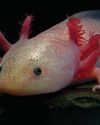
Metamorphosis: a life-changing event
WITH EVOLUTIONARY BIOLOGIST JV CHAMARY
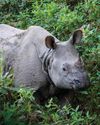
New series for BBC One: Asia
Settle in this autumn for a new natural-history extravaganza on BBC One and iPlayer: the longawaited Asia, presented by Sir David Attenborough.
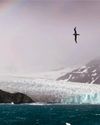
Loss of Antarctic sea ice could impact seabird food supply
Albatrosses and petrels may be forced to fly further to feed
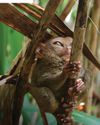
Tarsiers in trouble
Urgent action is needed to ensure survival of the Yoda-like primate

SNAP-CHAT
Chien Lee on shrew loos, rogue drones and being rained out of bed
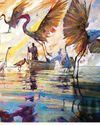
VISIONS OF NATURE
The winners of the Wildlife Artist of the Year competition 2024, from David Shepherd Wildlife Foundation